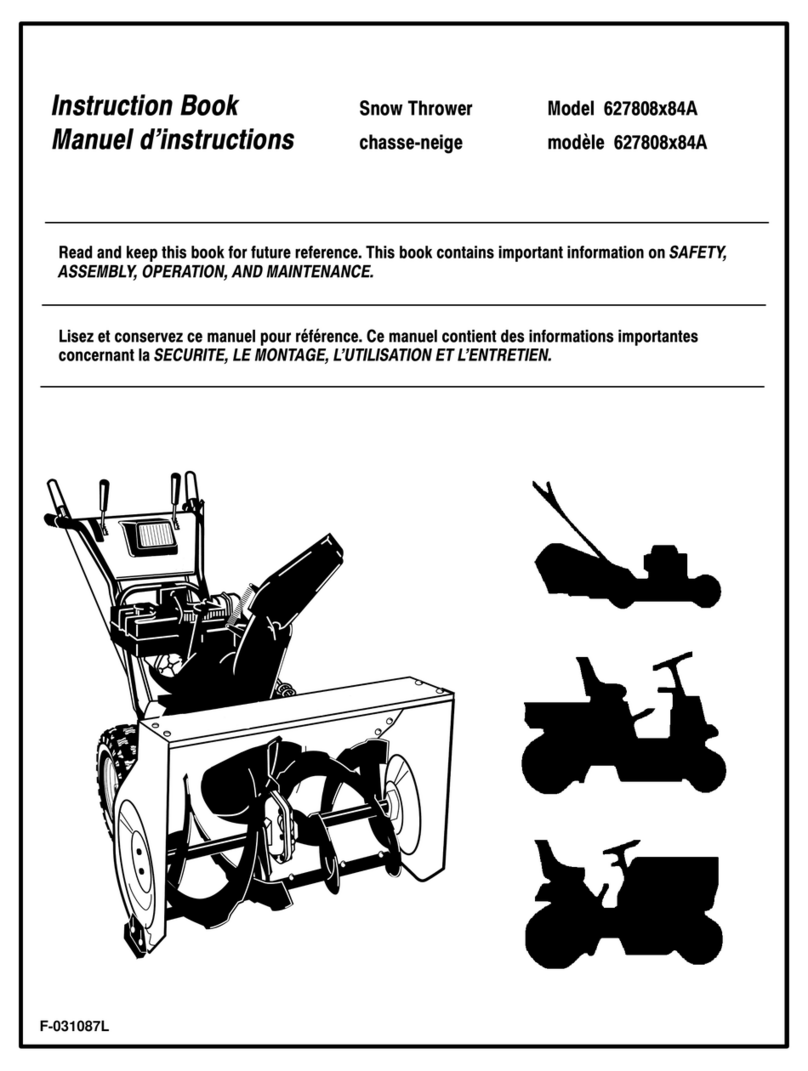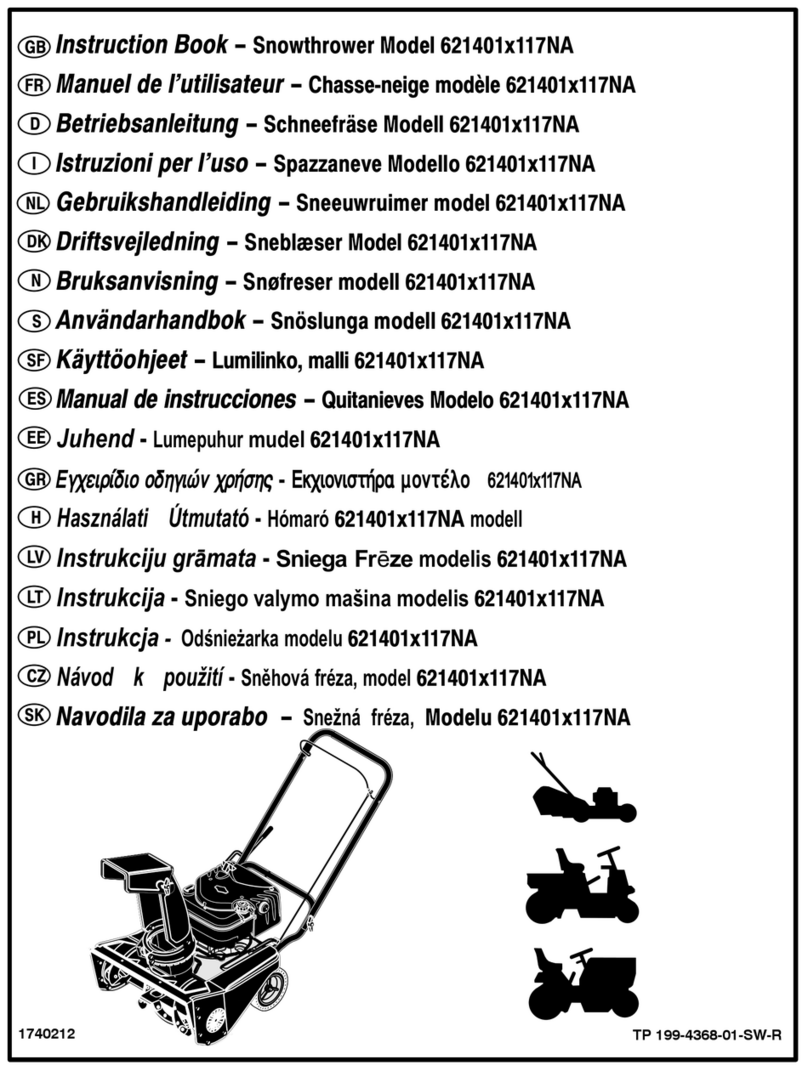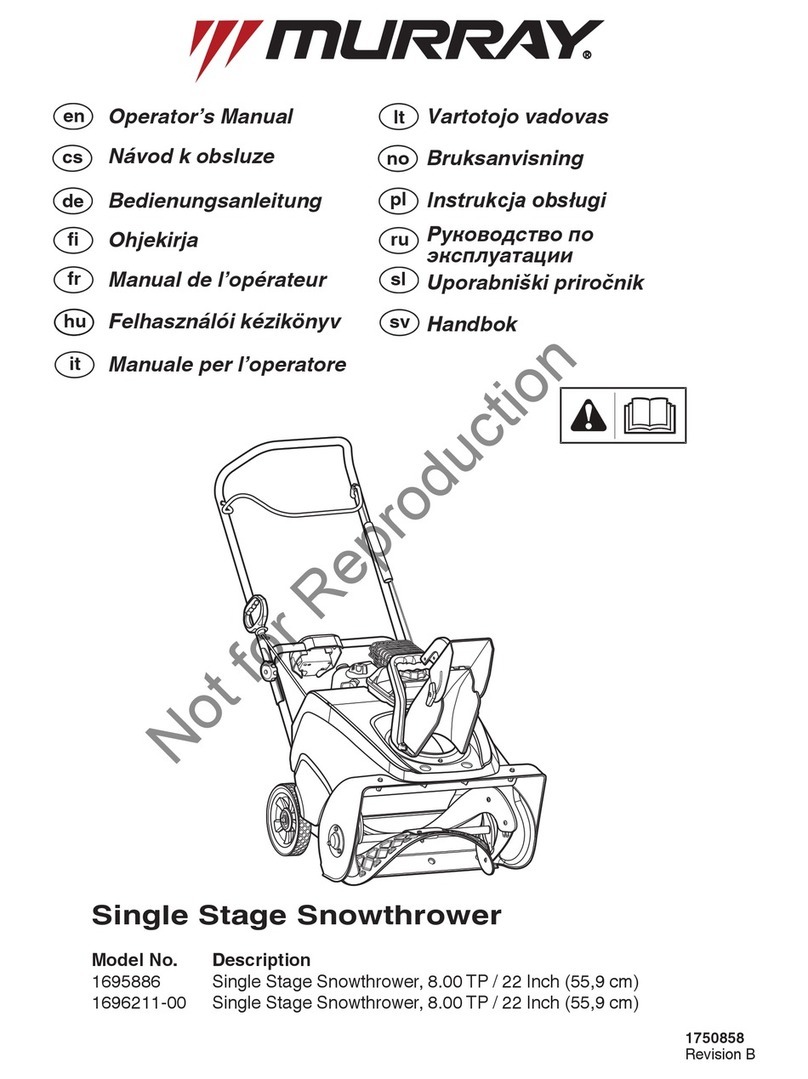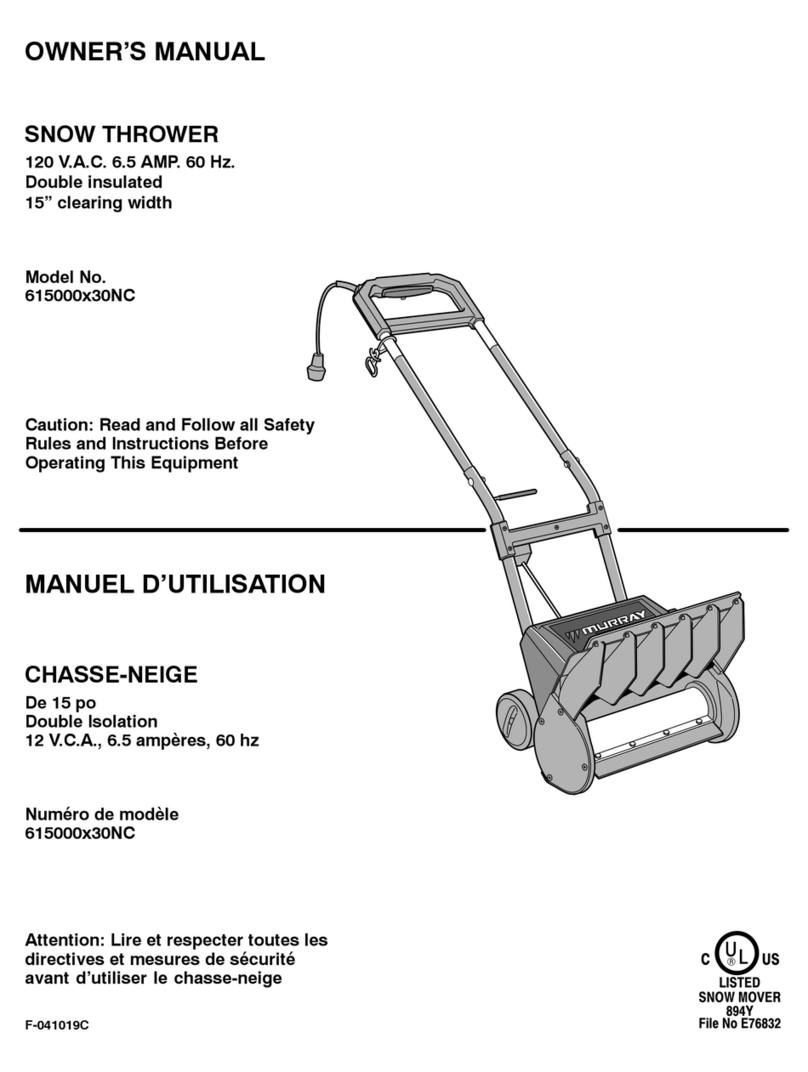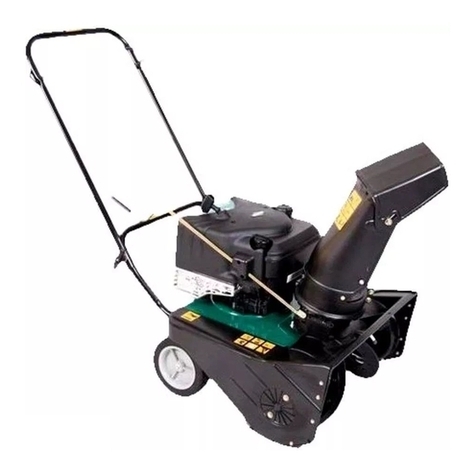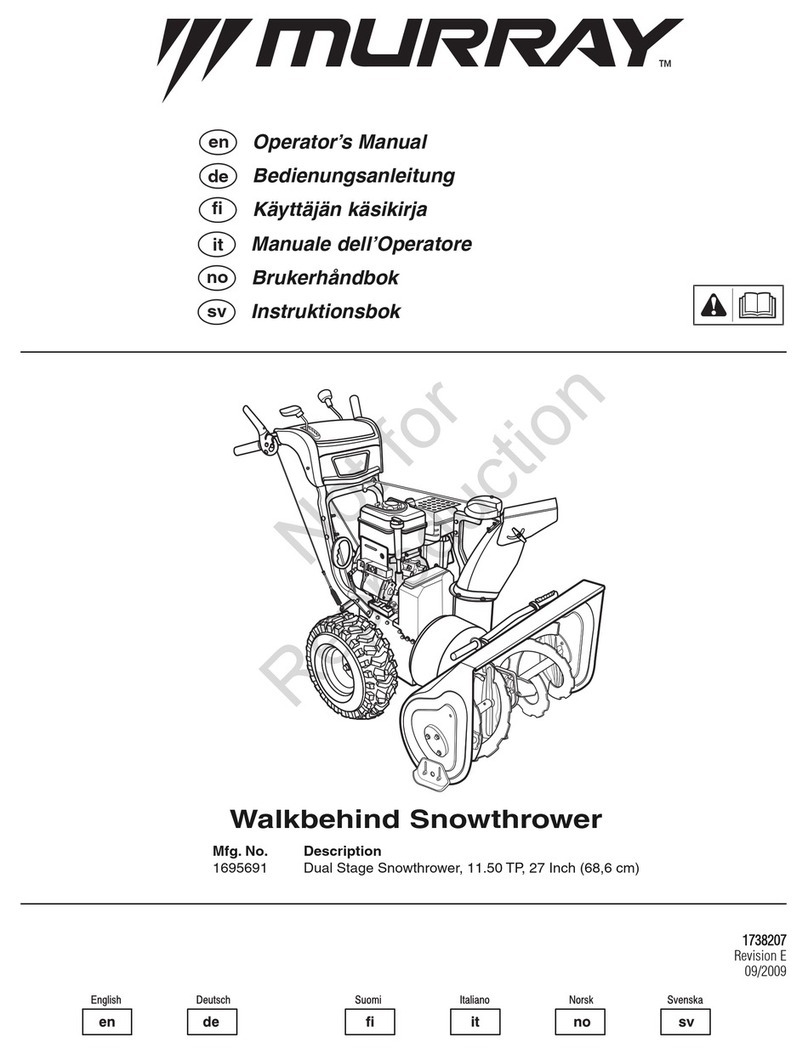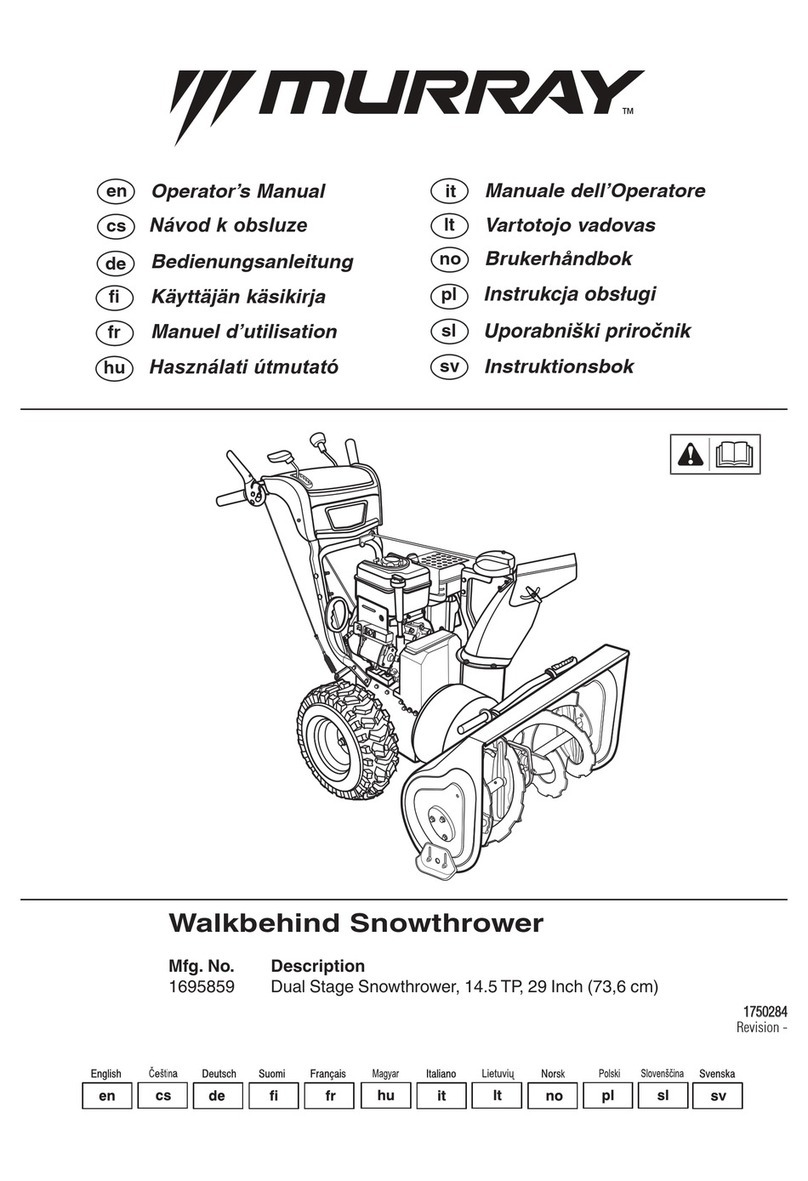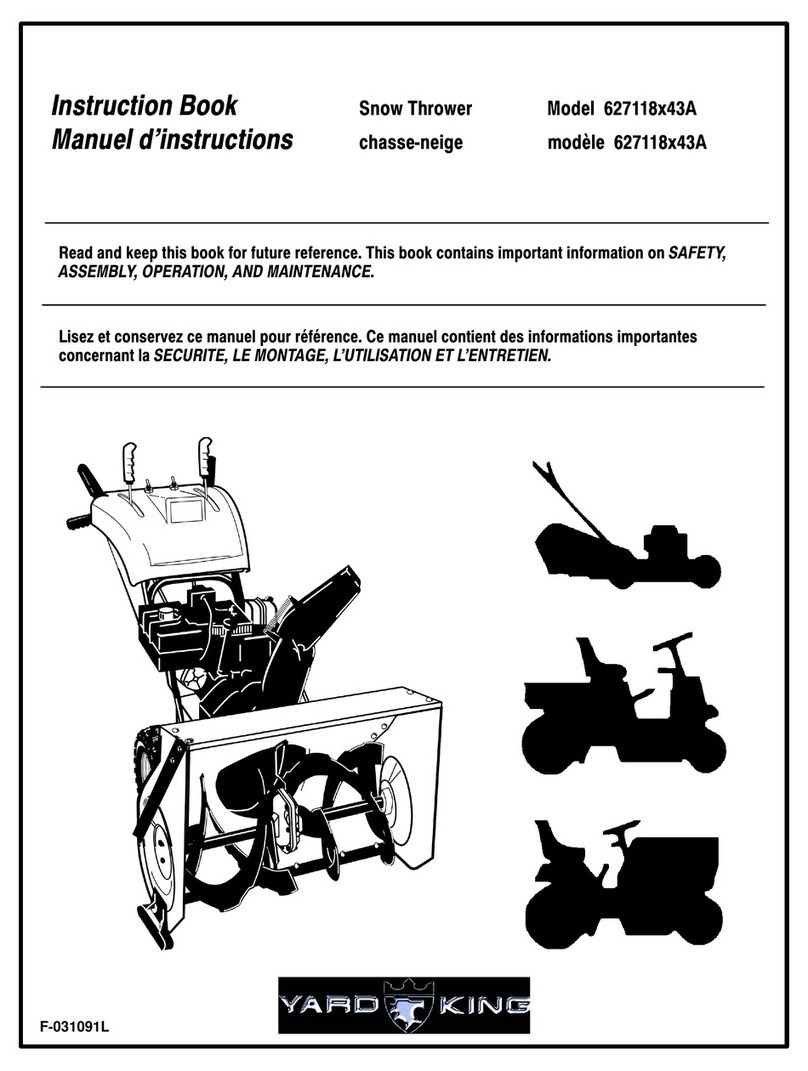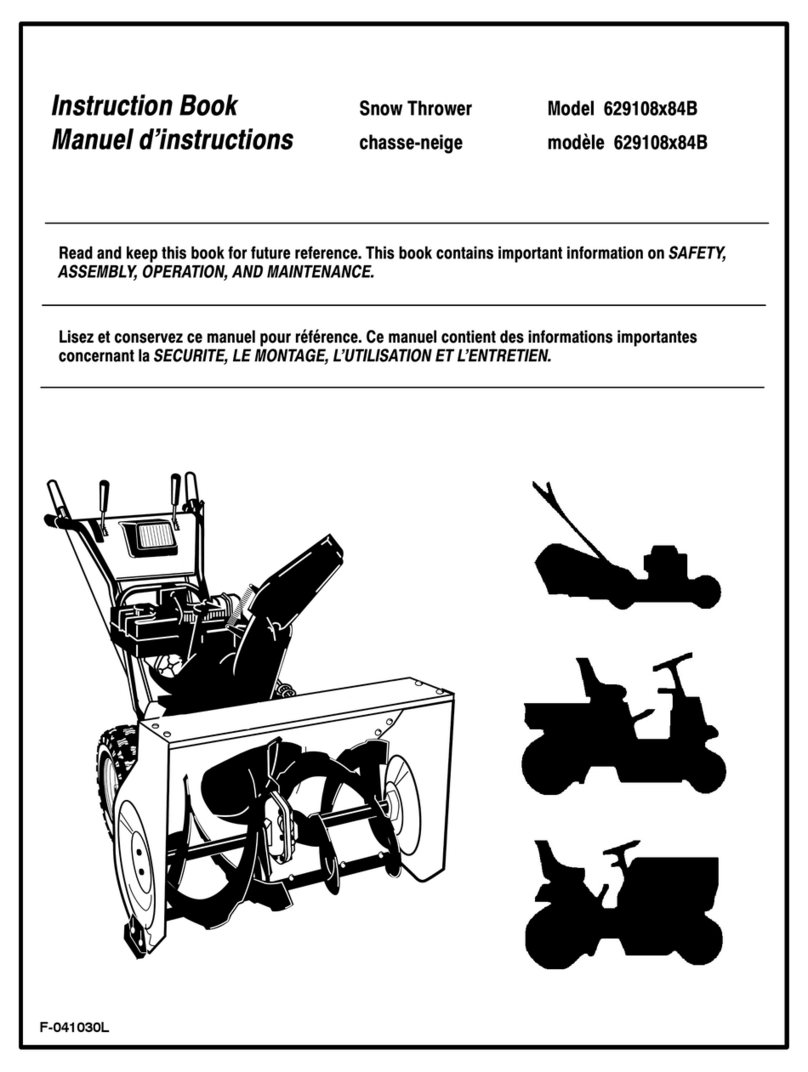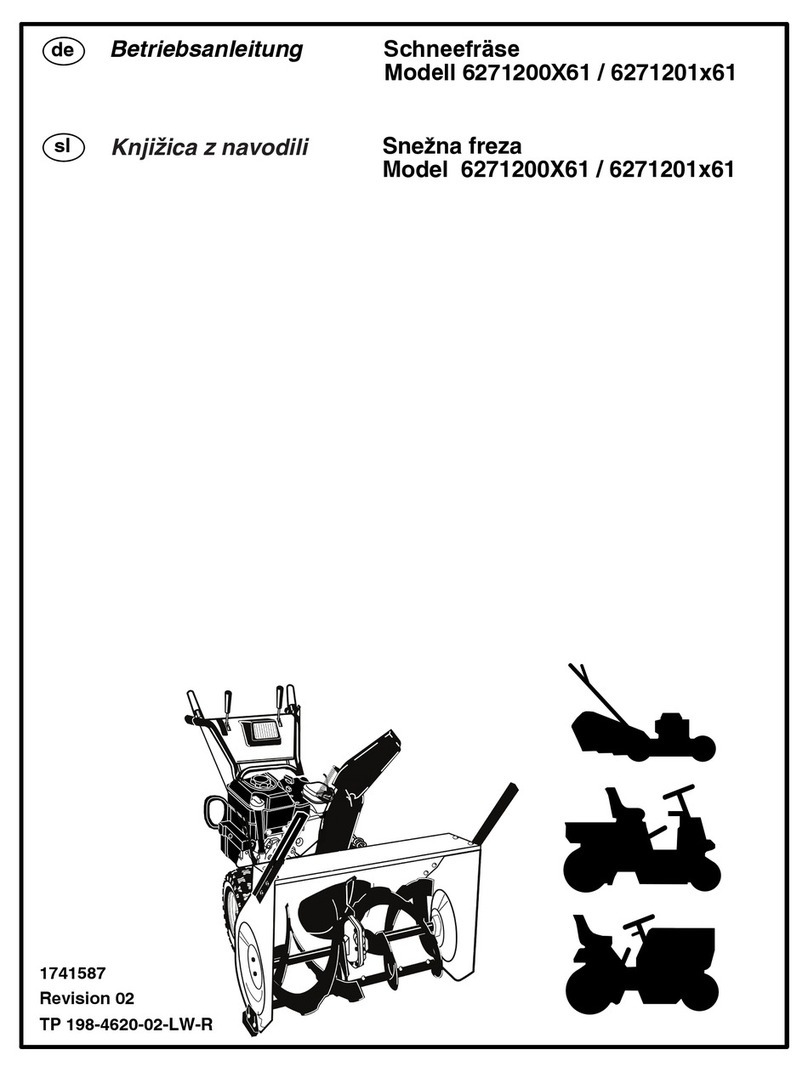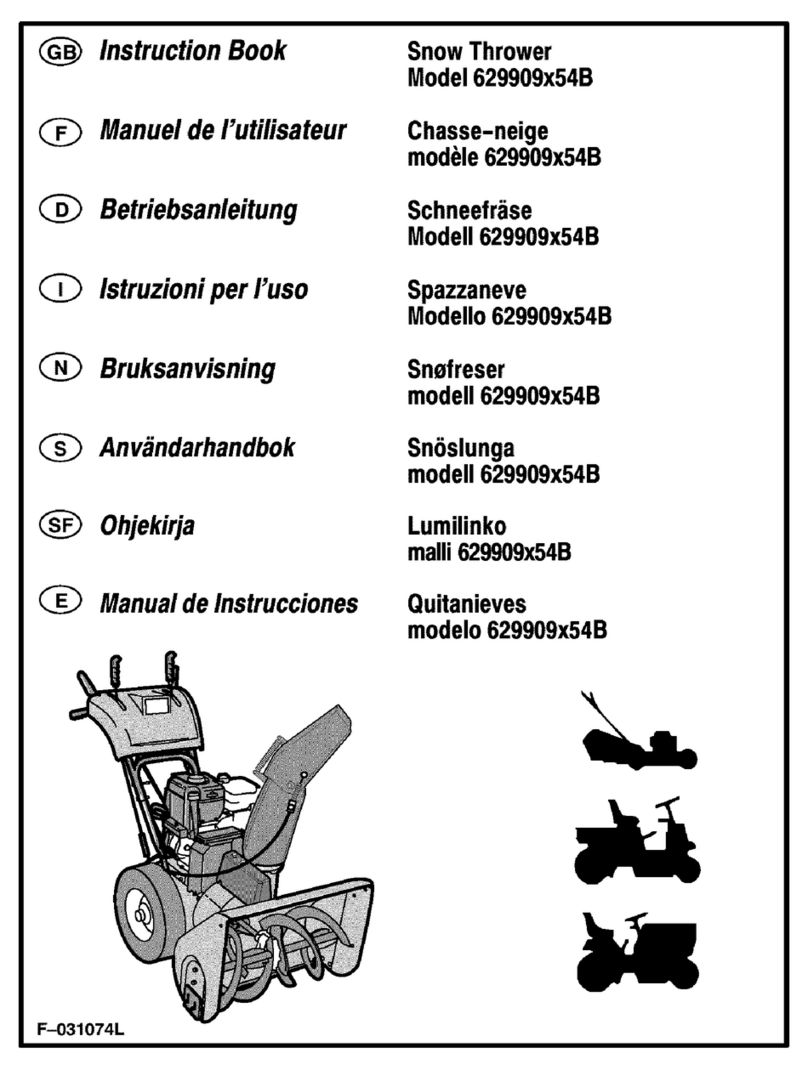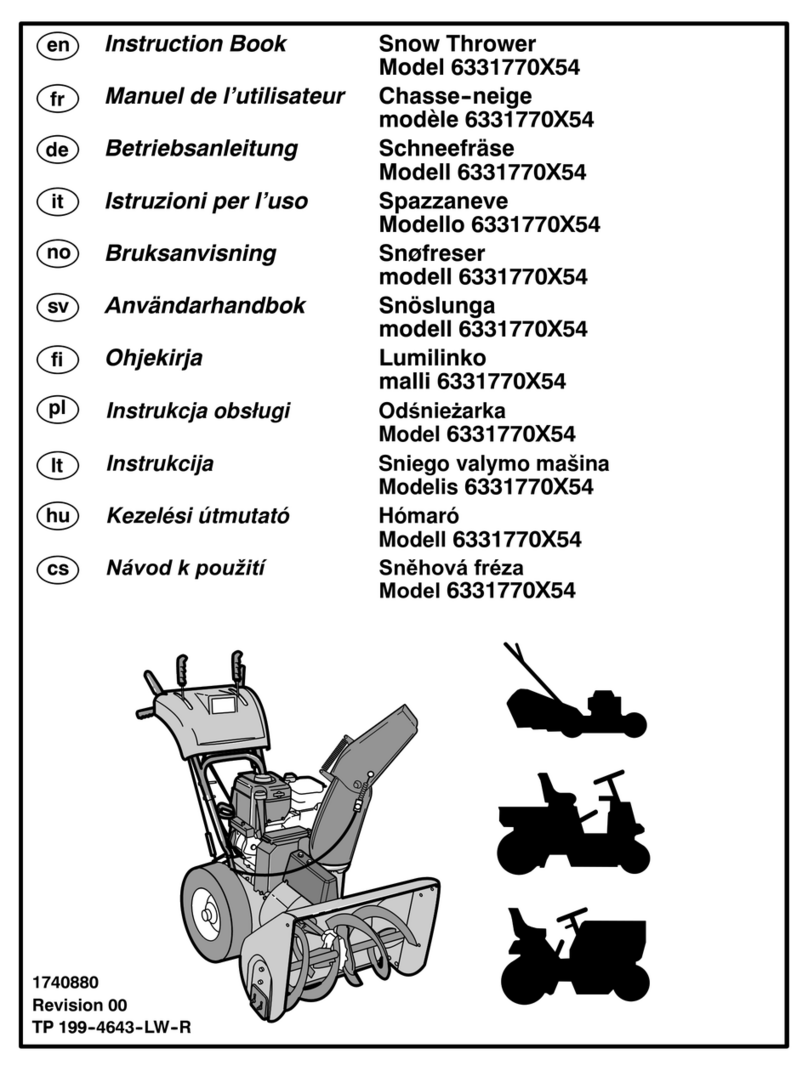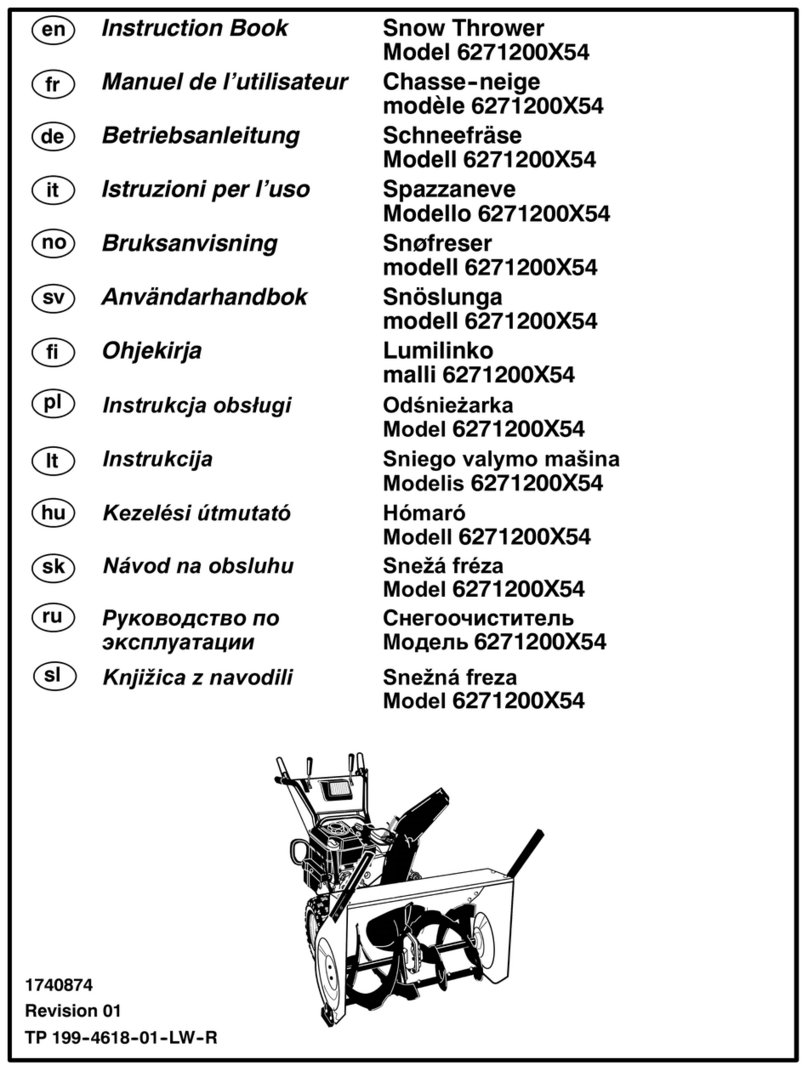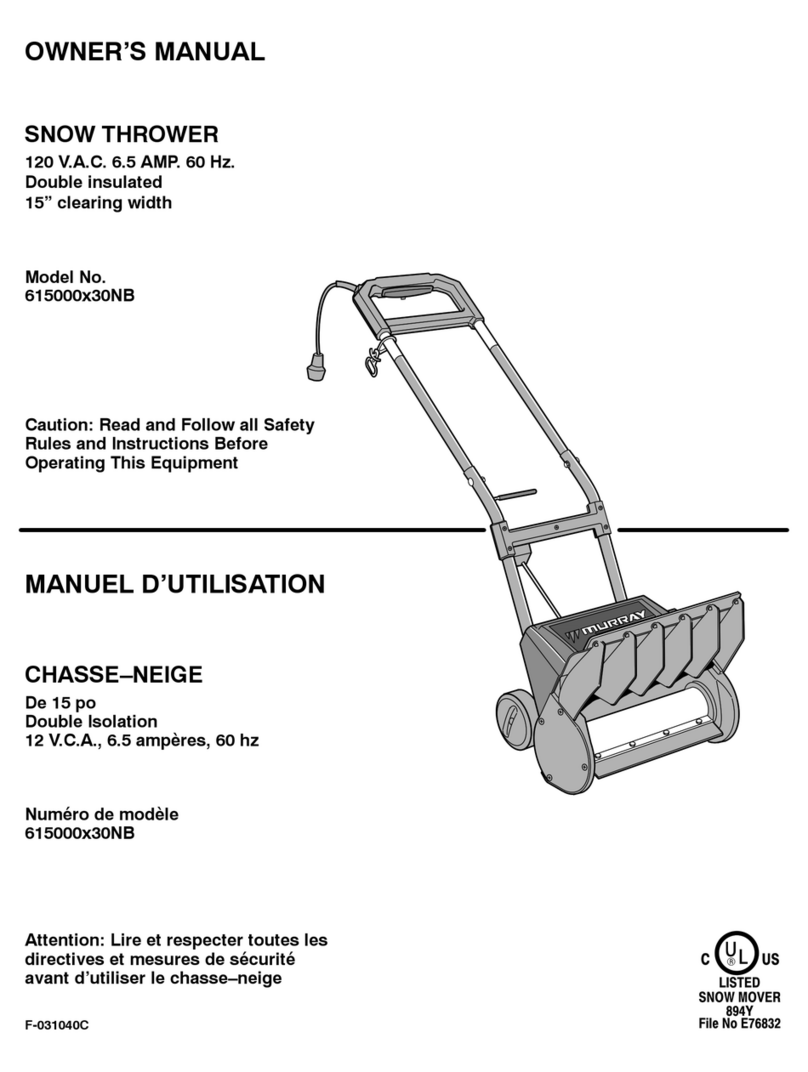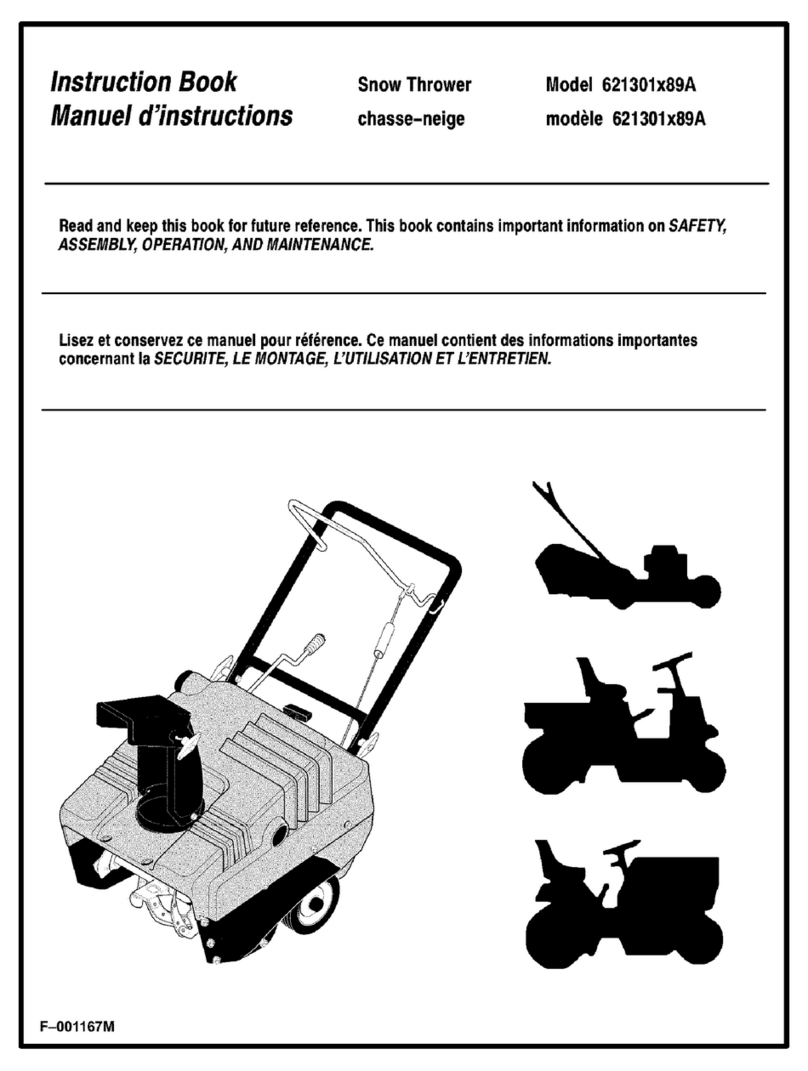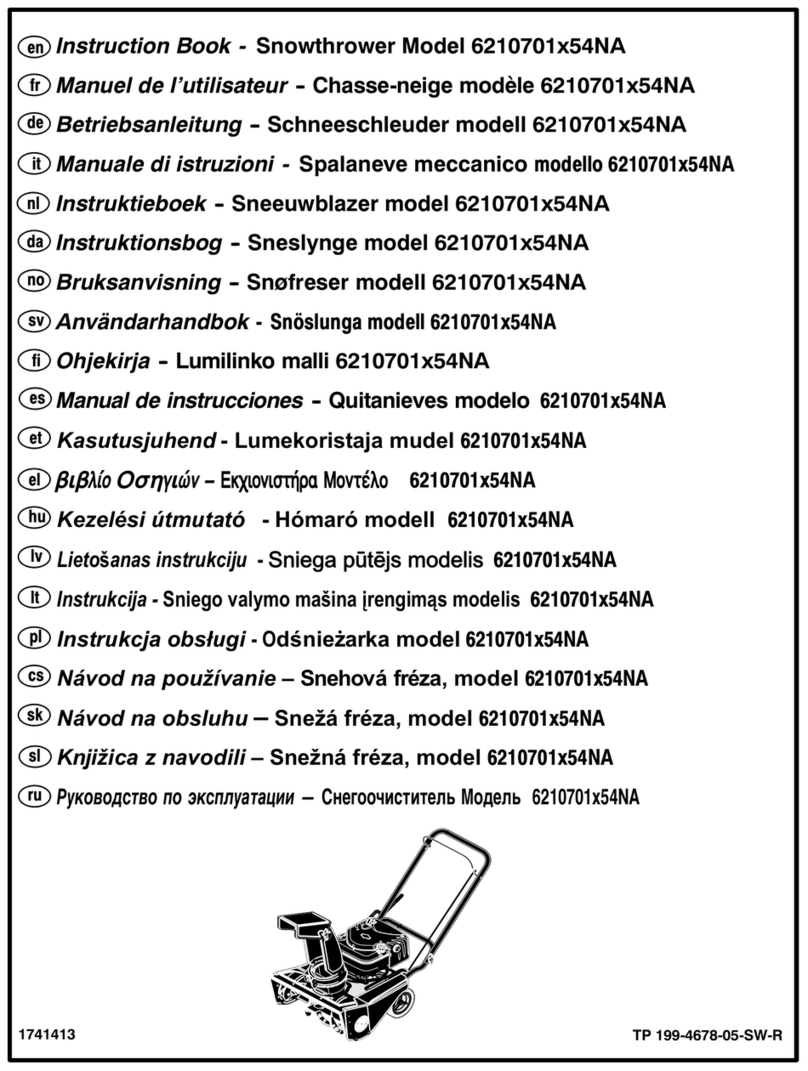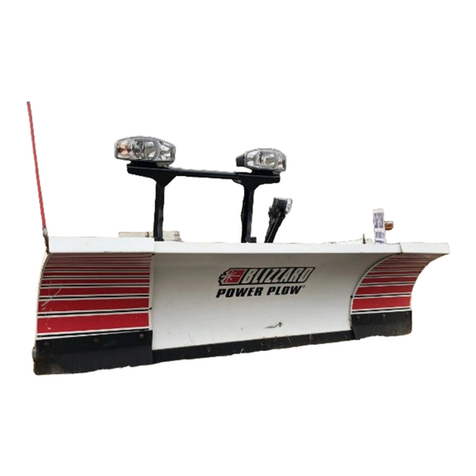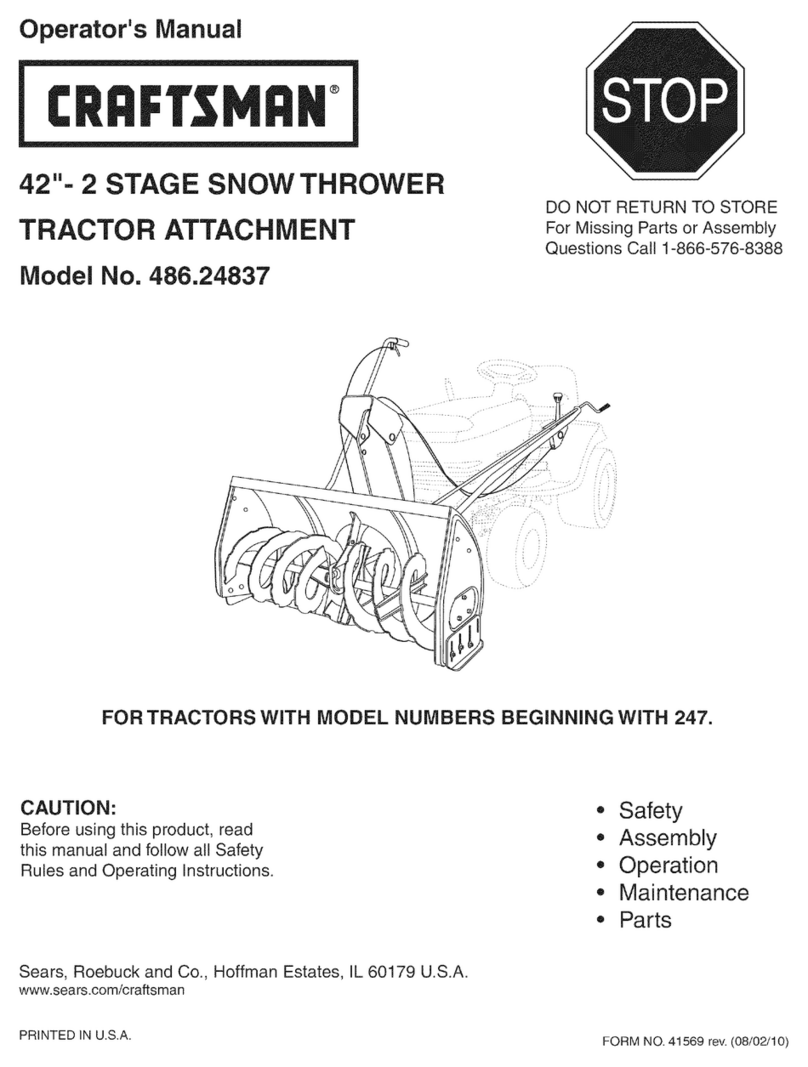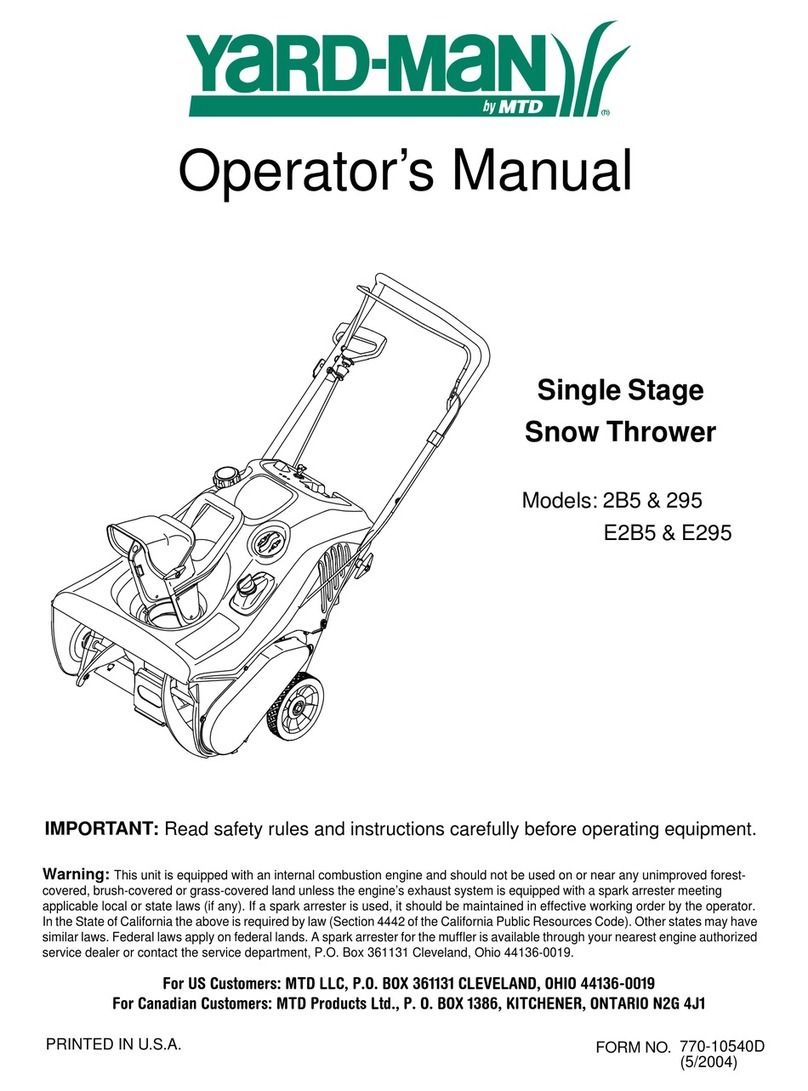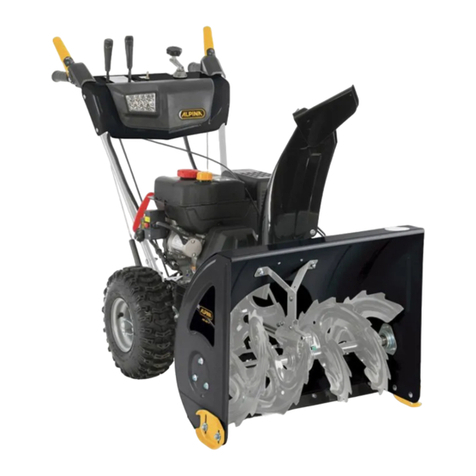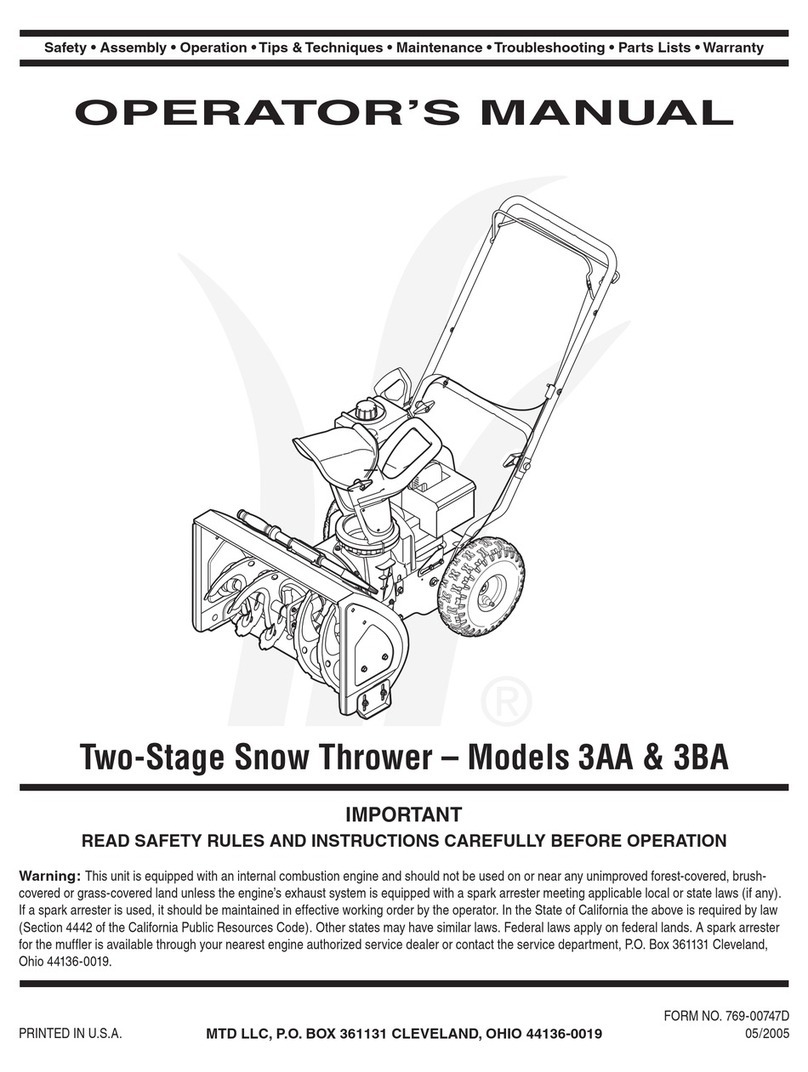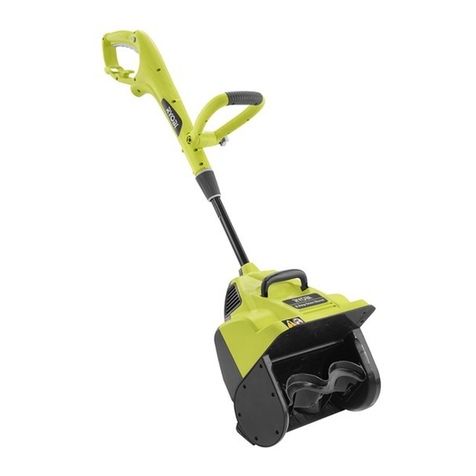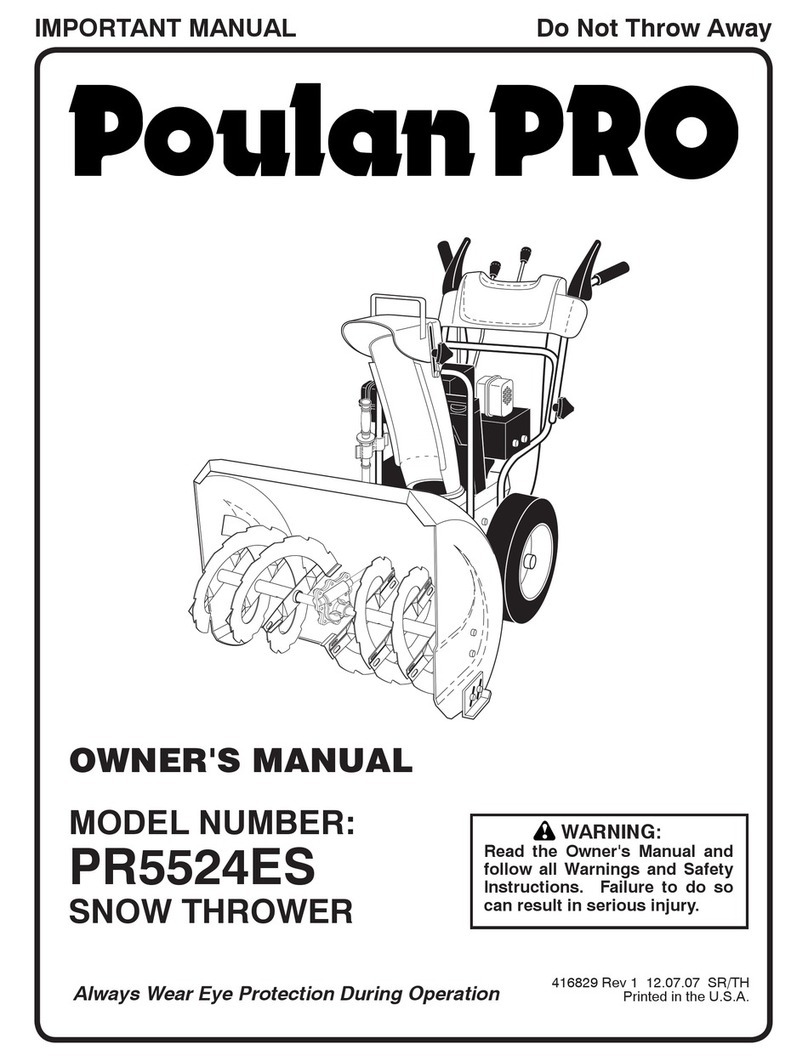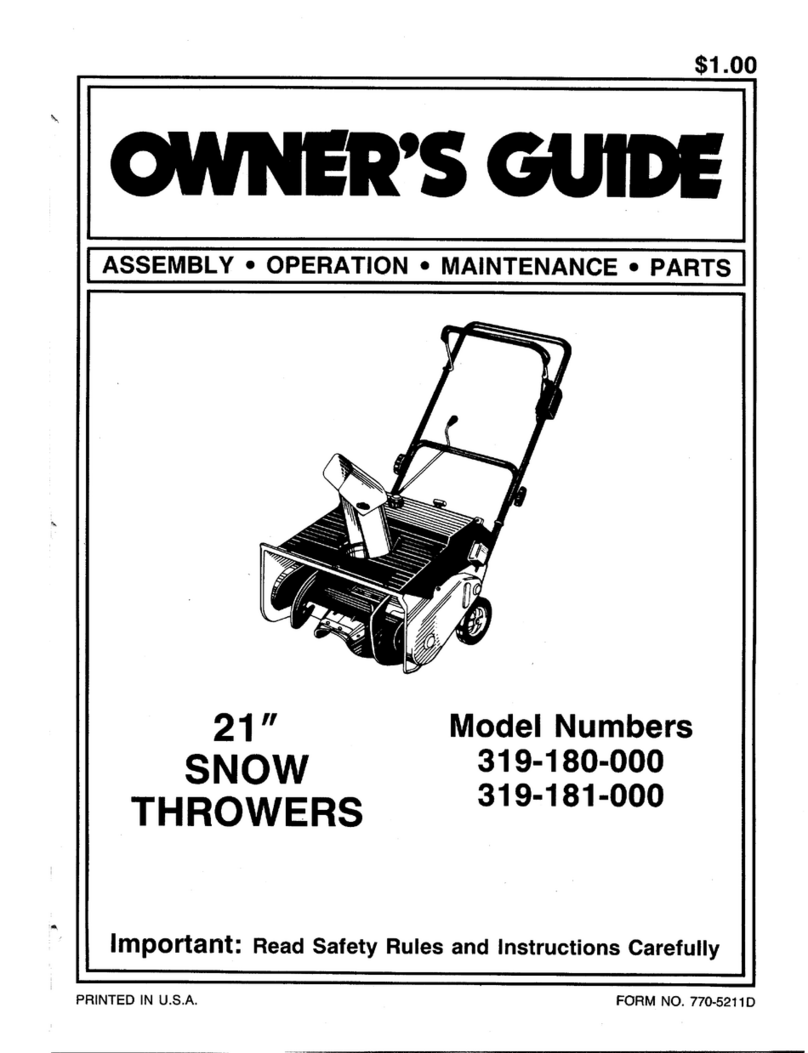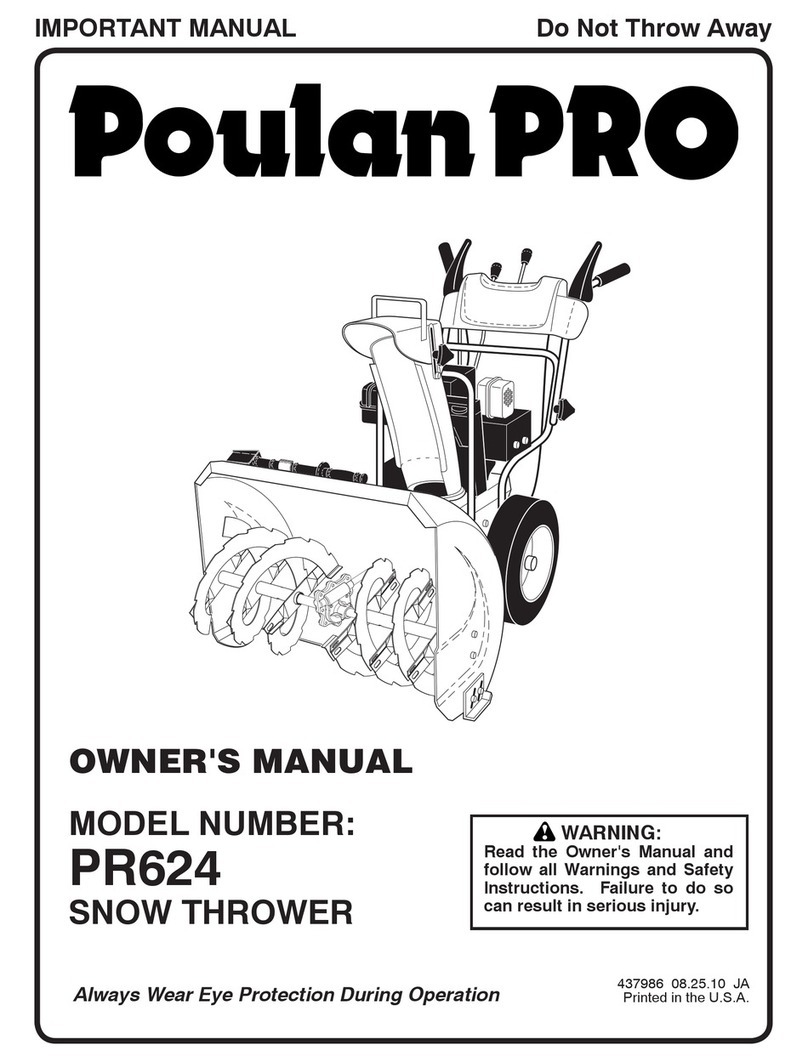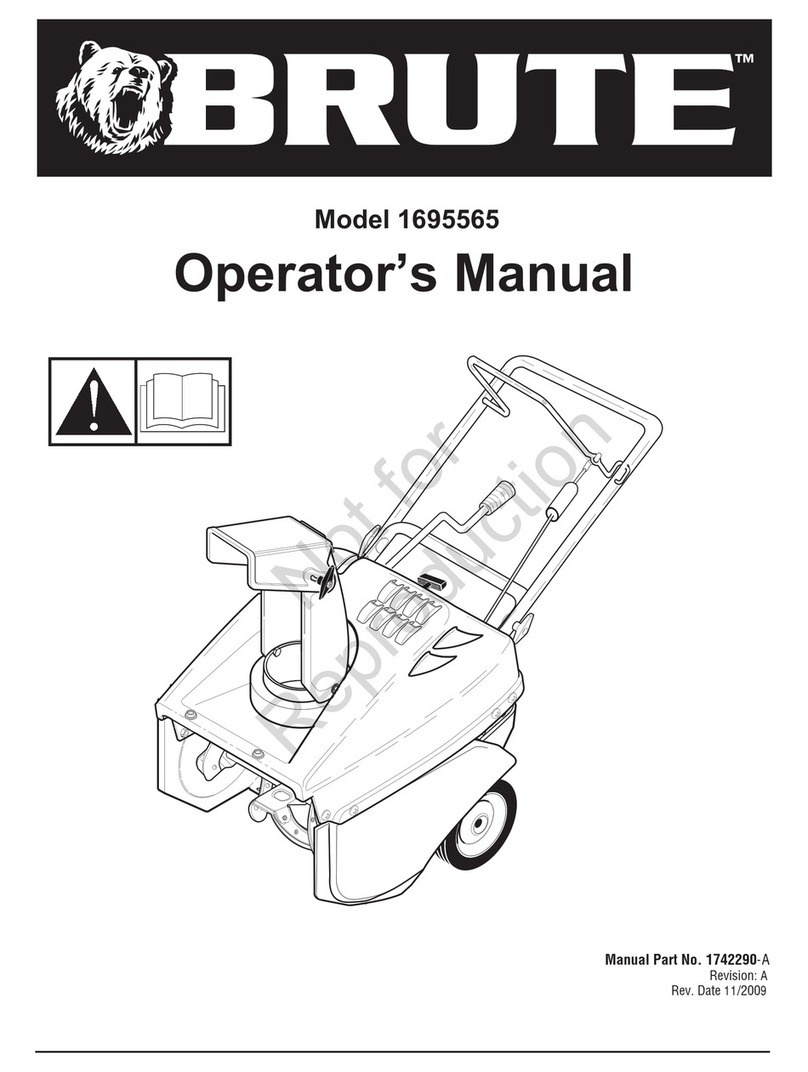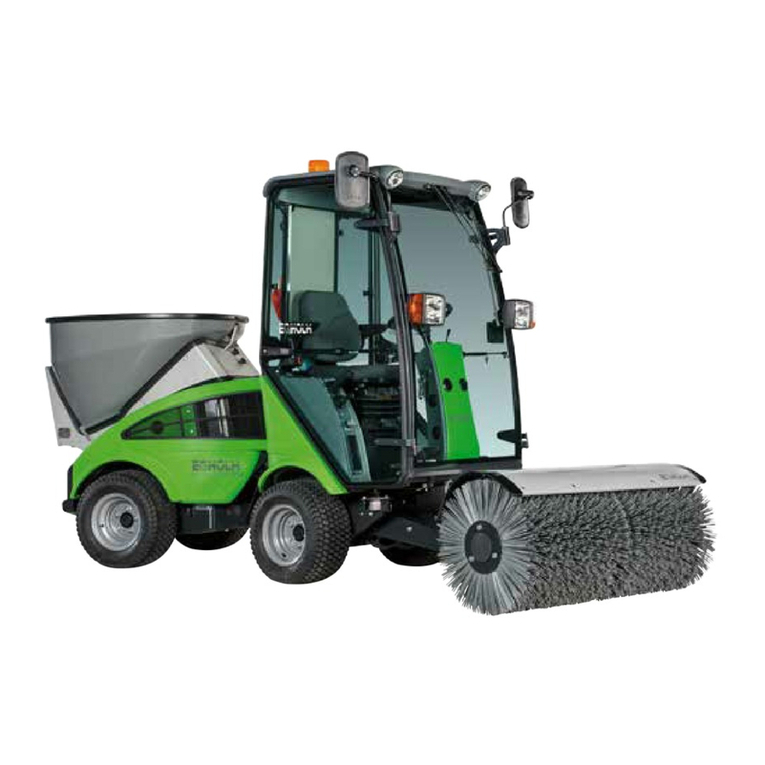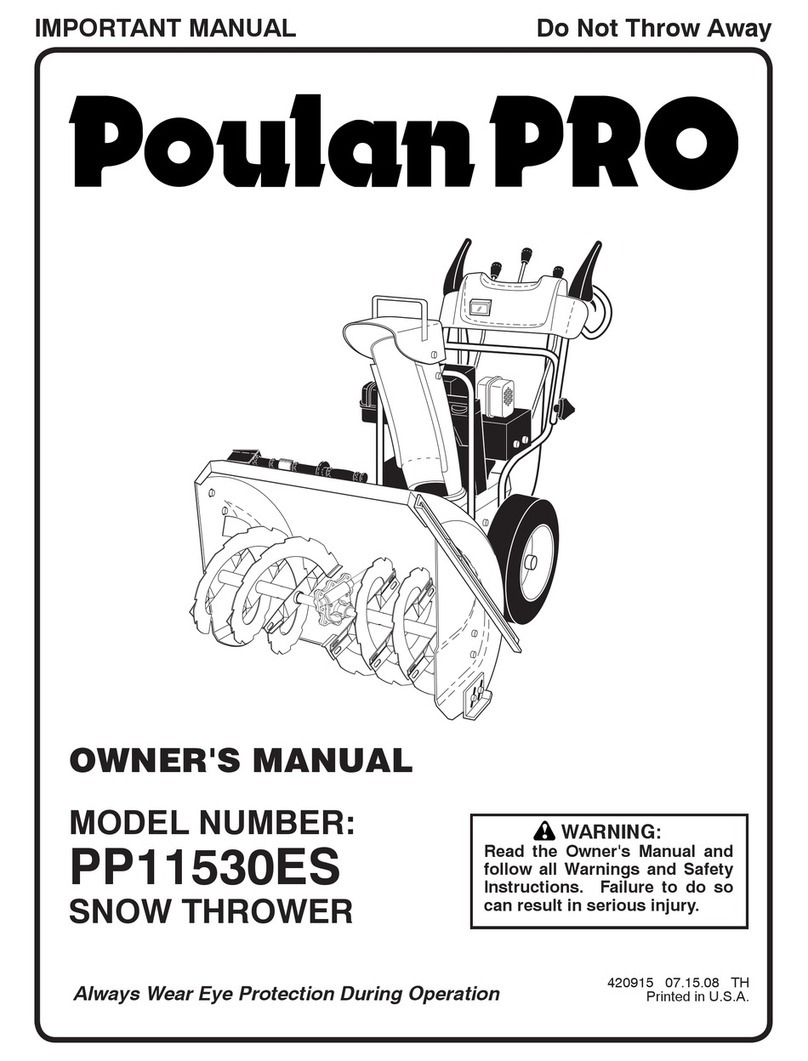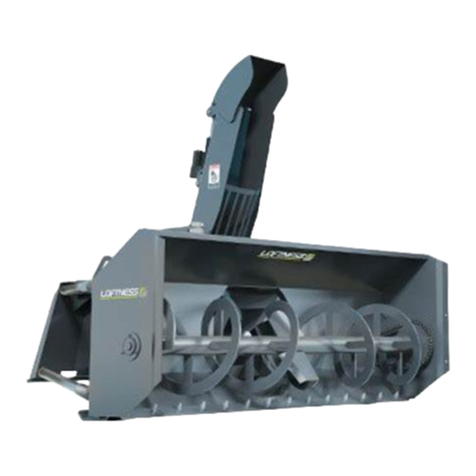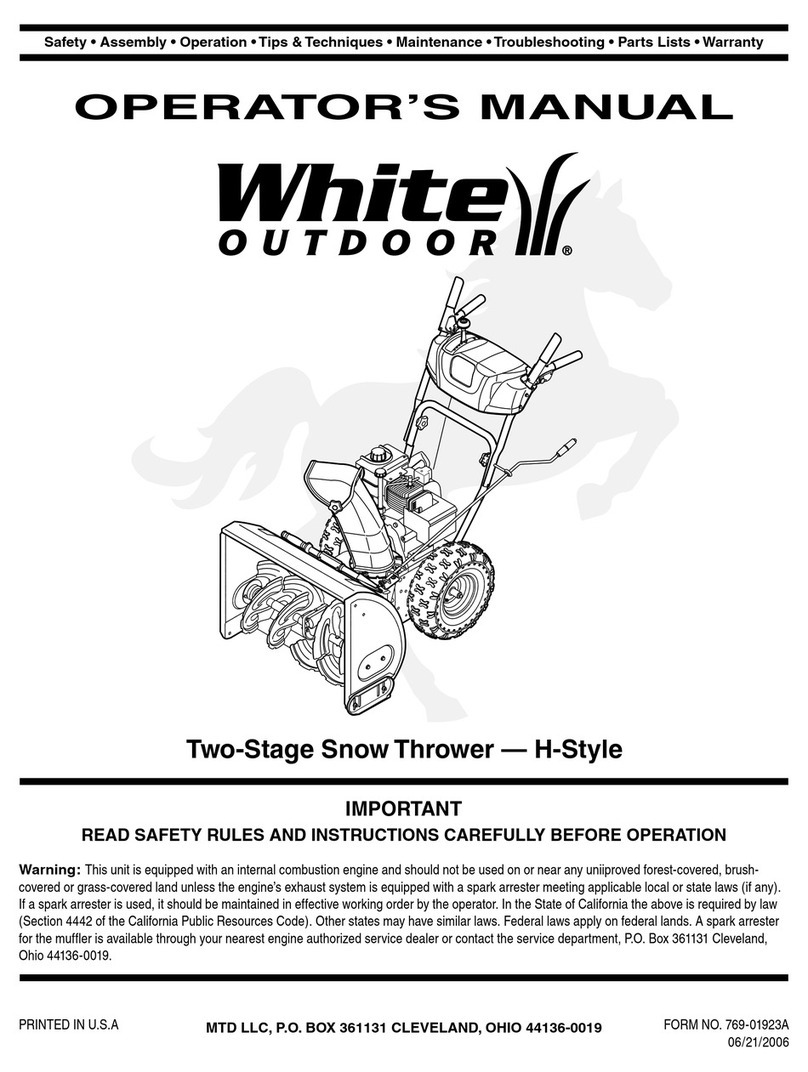
GB
8
F--051054L
How To Stop
The Snow Thrower (Figure 1)
1. To stop discharging snow, release the auger
drive lever (5).
2. To stop the wheels, release the traction
drive lever (1).
3. To stop the engine, move the stop switch
(13) to the OFF position.
CAUTION: To stop the engine, do not move
the choke control to CHOKE position. Back-
fire or engine damage can occur.
How To Go Forward or Backward
(Figure 1)
1. To change the ground speed, first release the
traction drive lever (1) and then move the
speed shift lever (6) to the desired speed.
2. Ground speed is determined by snow condi-
tions. Select the speed by moving the speed
shift lever (6) into the appropriate notch on
the shift lever plate.
Speed 1, 2 Wet, Heavy
Speed 3 Light
Speed 4 Very Light
Speed 5, 6 Transport only
3. To go forward, engage the traction drive
lever (1). Maintain a firm hold on the handle
as the snow thrower starts to move forward.
Guide the snow thrower by moving the han-
dle either left or right. Do not attempt to push
the snow thrower.
4. To go backward, release the tractor drive
lever (1).
5. Move the speed shift lever (6) into either
first or second reverse.
6. Engage the traction drive lever (1).
IMPORTANT: Do not move the speed shift
lever (6) while the traction drive lever (1) is
engaged.
How To Throw Snow (Figure 1)
1. Engage the auger drive lever (5).
2. To stop throwing snow, release the auger
drive lever (5).
WARNING: The operation of any
snow thrower can result in foreign
objects being thrown into the eyes,
which can result in severe eye damage.
Always wear safety glasses or eye shields
while operating the snow thrower. We rec-
ommend standard safety glasses or use a
wide vision safety mask over your glasses.
How To Use The Wheel Lockout Pin
(Figure 13)
1. The right hand wheel is secured to the axle
with a klick pin (1). This unit was shipped
with this klick pin (1) through the wheel hole
in the locked position (2).
2. For ease of maneuverability in light snow
conditions, change the klick pin (1) to an
unlocked position (3).
3. Disconnect the klick pin (1) from the wheel
locked position (2). Push the klick pin (1)
through the unlocked axle hole only. The unit
is now in the single wheel drive unlocked
position (3).
Before Starting The Engine
1. Before you service or start the engine, famil-
iarize yourself with the snow thrower. Be
sure you understand the function and loca-
tion of all controls.
2. Check the tension of the clutch cable before
starting the engine. See “How To Adjust The
Clutch Cable” in the Maintenance section of
this manual.
3. Make sure that all fasteners are tight.
4. Make sure the height adjust skids are proper-
ly adjusted. See “How To Adjust The Height
Of The Skids” in the Maintenance section of
this manual.
5. Check the air pressure in the tires. The cor-
rect air pressure is 14 PSI (1 BAR) to 17 PSI
(1.25 BAR). Do not exceed the maximum
amount of air pressure shown on the side of
the tire.
How To Stop The Engine (Figure 1)
1. Push the stop switch (13) to the OFF posi-
tion.
2. Pull out the safety key (8).
CAUTION: To stop the engine, do not move
the choke control to CHOKE position. Back-
fire or engine damage can occur.
How To Start The Engine (Figure 1)
Models equipped with an Electric Starter
NOTE: An electric starter kit can be added to
recoil start engines. Electric starter kits are
available from your nearest authorized ser-
vice center.
WARNING: The starter is equipped
with a three--wire power cord and
plug and is designed to operate on
220 volt A.C. household current. The power
cord must be properly grounded at all times
to avoid the possibility of electrical shock
which can injure the operator. Carefully fol-
low all instructions in the “How To Start The
Engine” section. Make sure that your house
wiring is a three--wire grounded system. If
you are not sure, ask a licensed electrician.
If your house wire system is not a
three--wire grounded system, do not use
this electric starter under any conditions. If
your system is grounded but a three--hole
grounded receptacle is not available to start
the engine, have a three--hole grounded re-
ceptacle installed by a licensed electrician.
To connect a 220 volt A.C. power cord, al-
ways connect the power cord to the switch
box (11) on the engine first. Then, plug the
other end into the three--hole grounded re-
ceptacle. When disconnecting the power
cord, always unplug the end from the
three--hole grounded receptacle first.
How To Start A Cold Engine (Figure 1)
1. Check the engine oil.
2. Fill the fuel tank with regular unleaded petrol.
See “How To Prepare The Engine”.
3. Make sure the traction drive lever (1) and
the auger drive lever (5) are in the disen-
gaged (released) position.
4. Push the stop switch (13) to the ON posi-
tion.
5. Push in the safety key (8).
6. Rotate the choke knob (14) to the CHOKE
position.
7. (Electric Start) Connect the power cord to
the starter motor located on the engine.
8. (Electric Start) Plug the other end of the
power cord into a three--hole, grounded 220
VOLT, A.C. receptacle. (See the WARNING
in this section).
9. Push the primer button (9). Every time you
push the primer button (9),waittwosec-
onds. For the number of times required to
push the primer button (9), see the engine
manufacturer’s instructions.
10.(Electric Start) Push on the electric start
button (10) until the engine starts. Do not
crank for more than 5 seconds at a time.
Wait one minute between starts to allow the
starter to cool.
11. (Recoil Start) Slowly pull the recoil starter
handle (12) until resistance is felt and then
pull rapidly to start the engine. Do not allow
the recoil starter handle (12) to snap back.
Slowly return the recoil starter handle (12).
12.If the engine does not start in 5 or 6 tries,
See the “Trouble Shooting Chart” Instruc-
tions.
13.1.Allow the engine to warm up for several
minutes. As the engine warms up, adjust the
choke knob (14) toward the RUN position.
Wait until the engine runs smoothly before
each choke adjustment.
14.(Electric Start) First disconnect the power
cord from the three--hole receptacle. Then,
disconnect the power cord from the starter
motor.
NOTE: In temperatures below 0°F, allow
the engine to warm up for several minutes
before blowing snow.
WARNING: Never run the engine
indoors or in enclosed, poorly ven-
tilated areas. Engine exhaust con-
tains carbon monoxide, an odorless and
deadly gas. Keep hands, feet, hair and
loose clothing away from any moving parts
located on the engine or the snow thrower.
The temperature of muffler and nearby
areas may exceed 150°F. Avoid these
areas.
How To Start A Warm Engine (Figure 1)
If an engine has been running and is still warm,
leave the choke control (14) in the off position
and do not push the primer button (9).Ifthe
engine fails to start, follow the instructions “How
To Start A Cold Engine”.
NOTE: Do not use the primer button (9) to
start a warm engine.
How To Start An Engine With A Frozen Electric
Starter (Figure 1)
If the electric starter is frozen and will not turn
the engine, follow the instructions below.
1. Pull as much starter rope as possible out of
the starter.
2. Release the starter handle and let it snap
back against the starter. Repeat until the en-
gine starts.
Warm engines will cause condensation in cold
weather. To prevent possible freeze--up of recoil
starter and engine controls, proceed as follows
after each snow removal job.
1. Run the snow thrower a few minutes after
throwing snow to prevent freeze--up of the
auger/impeller.
